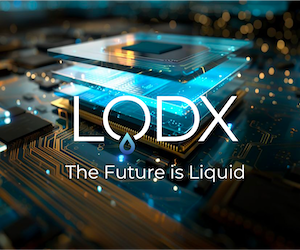It’s been a few years since I toured the US headquarters of SUSS MicroTec in Waterbury VT, so when general manager, Wilfried Bair invited me out to see their latest toolset developed with 3D integration processes in mind, and get the scoop on the company’s new temporary bonding and debonding system, I jumped at the chance.
Wafer-level packaging, MEMS, and LED have long been the foci of SUSS MicroTec, but as 3D integration and packaging processes emerge as pivotal to the semiconductor industry, SUSS MicroTec has adjusted its strategy. Rather than adapting existing toolsets to also handle 3D integration processes, 3D now tops the priority list, and all 300 mm equipment in development has been optimized with 3D processes in mind first, which in turn benefits the existing markets with higher performing tools. Wilfried Bair, general manager of SUSS MicroTec’s bonder division, and V.P. of business development worldwide, describes this win-win situation: “3D is driving innovation,” he says, and every other market we serve benefits.”
In his book, Handbook of 3D Integration: Technology and Applications of 3D Integrated Circuits, Dr. Phil Garrou, identifies 9 potential process variations for 3D IC stacking involving via formation, (vias first, middle, or last); thinning (on temp. carrier or 3D stack); temporary and/or permanent bonding (face to face or face to back bonding). Regardless of which variations shake out as standard, SUSS MicroTec has tools to cover it from patterning for TSVs (mask aligners and coaters), to bonding and stacking for either wafer-to-wafer die-to-wafer stacking (permanent bonding) as well as temporary bonding and debonding.
By far the most exciting piece of news Bair shared, (and one I had been waiting in anticipation for quite a while) involved the Bonder Division’s flagship platform, the XBC300, which offers a complete line of process modules for permanent and temporary wafer bonding. Of specific interest is the temporary bonding and debonding system that supports several different material processes that exist in the market.
Until the recently announced agreement with 3M, SUSS MicroTec has focused on the work with T-MAT, a German start-up company. To demonstrate the elegant simplicity of the T-MAT process, Bair first walked me through three comparable processes that can be performed on the XBC300, whose modules have been configured for temporary bonding (SC300 – Spin Coat for process integration and simplification; PL300T – Plasma to form release layer; LF300 – Low Force bond).
In Brewer Science’s Thermoslide process, the device wafer is flipped face down and temporarily bonded to a carrier wafer that has been first coated with an adhesive by spin-coating and baking. The device wafer is aligned and bonded and backside processing occurs. During the debond process, an electrostatic chuck is secured to the backside of the wafer (now on top) and by applying heat, is slid off the carrier wafer. It is then flipped while still attached to the chuck, cleaned, and then either flipped again and attached to a dicing frame for die-to-wafer stacking; or aligned and permanently bonded for wafer-to-wafer stacking. Bair notes that this process is not easy to do, requires multiple process steps, and is therefore expensive. It also has issues with delamination during the debond step on 300mm wafers.
The 3M process, by comparison, requires only one carrier transfer in the temporary bonding step. In this scenario, both the device wafer and the glass carrier are spin coated with a material; adhesive on the wafer, and a release layer on the carrier. The wafer is then flipped and bonded to the carrier by means of a UV curing step. After backside processing, the debonding processes is simple: the thinned device wafer is flipped and attached to the dicing frame, the release layer is activated by means of a laser to remove the carrier wafer easily, and then the adhesive is peeled away from the device wafer, which is subsequently cleaned and ready for stacking. Bair says this is an easier process, and although there is an additional bonding step, it’s fast and clean and can be done at room temperature.
The T-MAT (shown below) process further simplifies debonding by spincoating a precursor (elastomer) on both the device wafer and carrier wafer in the bonding process, and then using plasma to form the release layer. The device wafer is flipped and temporarily bonded to the carrier wafer. The debond process is simple. Wafers destined for W2W stacking are precision-aligned and permanently bonded. Those destined for D2W stacking are attached to a dicing frame. In either case, debonding is a cold process, and requires only a small gap to be made between the carrier and device wafer so it can be lifted off.


Bair’s philosophy – and therefore the basis of his approach for business development at SUSS MicroTec is simple: Provide the whole infrastructure. Build equipment that is standardized and flexible. When a new process pops up, make sure it can be accommodated. “Customers want bonded wafers, at lowest cost, with highest yield,” says Bair “How we do that is our problem.” Enough said. — F.v.T.


Bair’s philosophy – and therefore the basis of his approach for business development at SUSS MicroTec is simple: Provide the whole infrastructure. Build equipment that is standardized and flexible. When a new process pops up, make sure it can be accommodated. “Customers want bonded wafers, at lowest cost, with highest yield,” says Bair “How we do that is our problem.” Enough said. — F.v.T.





















